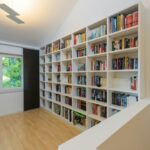Table of Contents
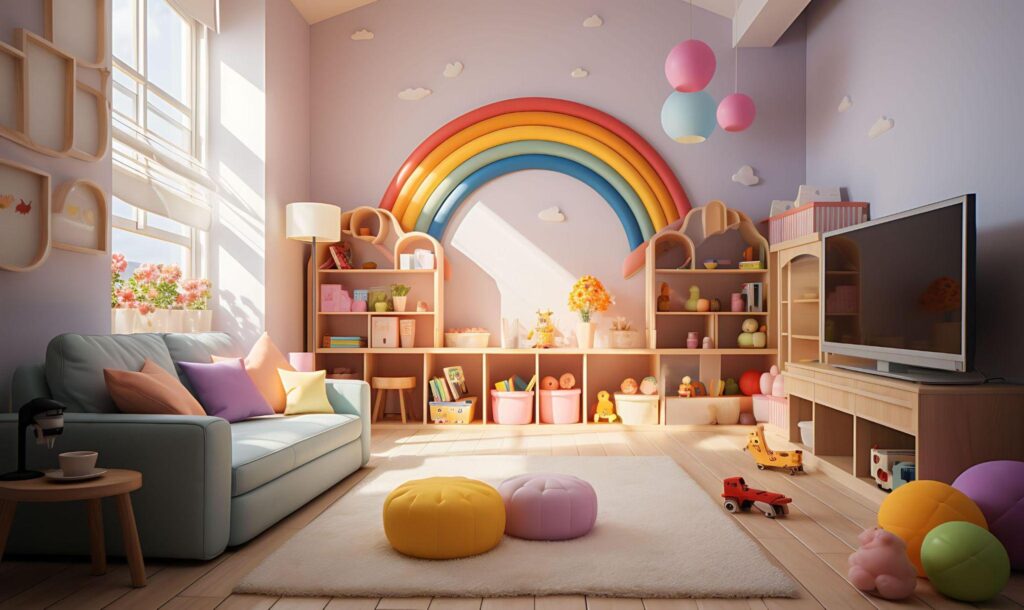
Transforming a spare space into a functional playroom might seem daunting, but it’s one of the most forgiving room designs you’ll ever tackle. Unlike kitchens or bathrooms with complex fixtures and permanent installations, playrooms thrive on flexibility and creativity rather than perfect execution. Discover why creating a playroom is easier than you think with smart storage tips, budget-friendly ideas, and fun design inspiration.
Start With What You Already Have
The most budget-friendly approach to playroom creation begins with a thoughtful inventory of existing resources. Most families already own many elements that can be repurposed for playroom use.
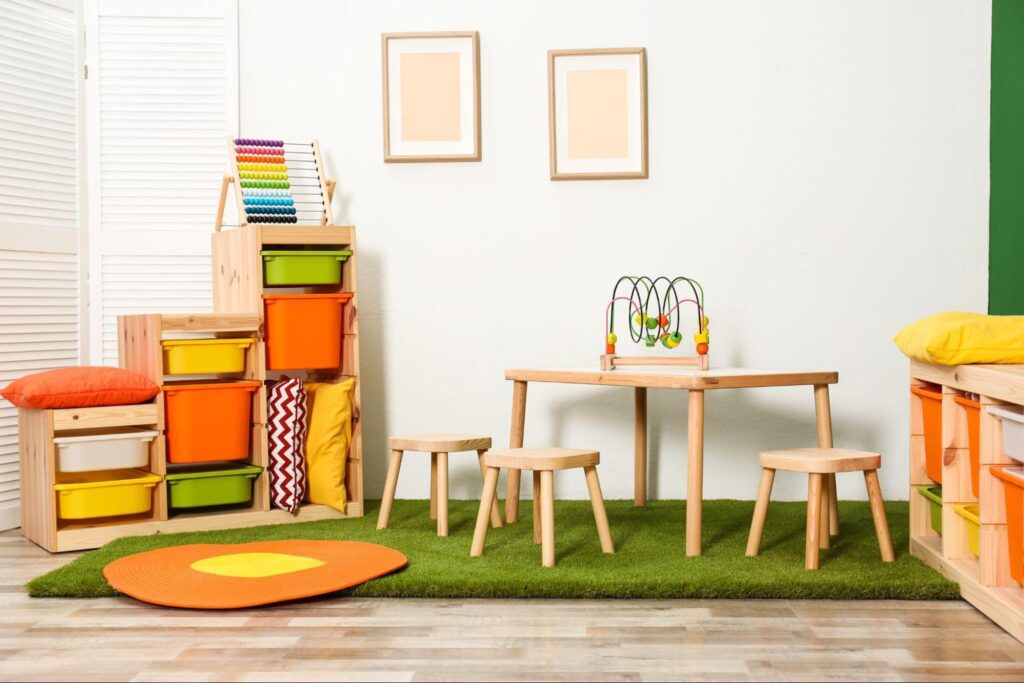
Furniture from other areas of your home often transitions perfectly to playroom functions. That small bookcase from your guest room becomes toy storage. The coffee table relegated to your basement works perfectly for craft projects. Even dining chairs can create instant activity seating when paired with a child-height table.
Storage containers you already own can be unified with simple interventions. Mismatched baskets, bins, and boxes look intentional when painted a single color or labeled with a consistent style. This cohesive approach creates visual order without requiring matched storage purchases.
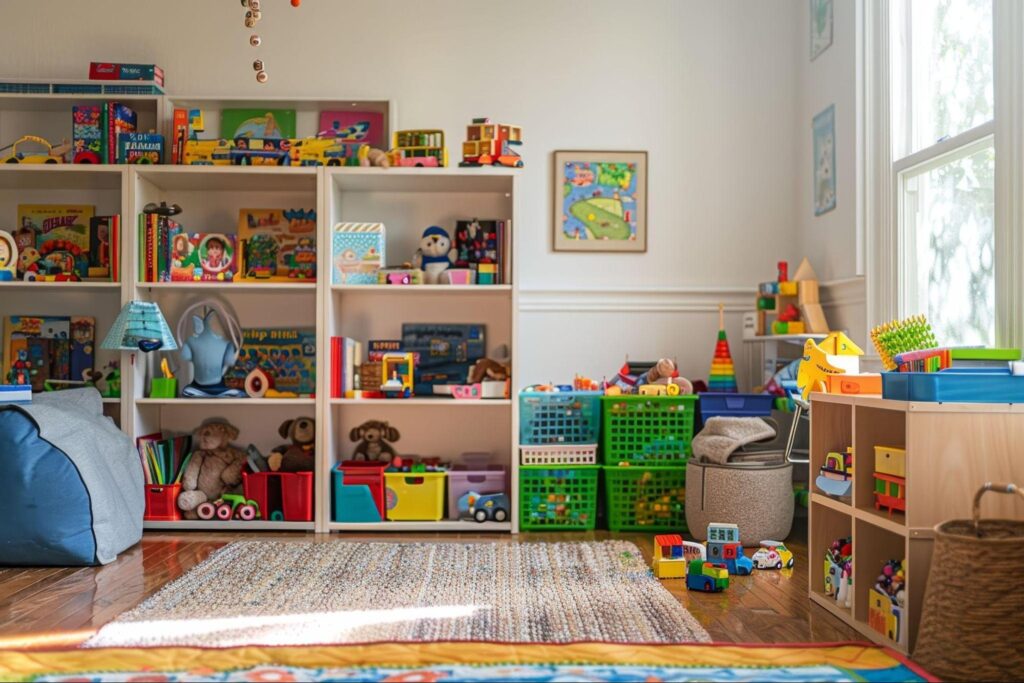
Floor coverings from other areas can define playroom spaces effectively. Area rugs that no longer work in your main living areas often find perfect second lives in playrooms, where their existing wear becomes less concerning and their colors or patterns might better suit playful activities.
The psychological benefit of repurposing existing items extends beyond budget considerations. Children often feel more comfortable and connected to spaces that incorporate familiar elements from throughout their homes. This continuity creates environments that feel like natural extensions of family life rather than isolated “kid zones.” Additionally, repurposing demonstrates sustainable practices to children, teaching valuable lessons about resourcefulness and environmental responsibility through everyday examples.
Zone Creation Without Construction
Effective playrooms typically feature distinct activity zones, but creating these areas doesn’t require building walls or installing permanent features. Simple furniture arrangement establishes boundaries more flexibly than structural changes.
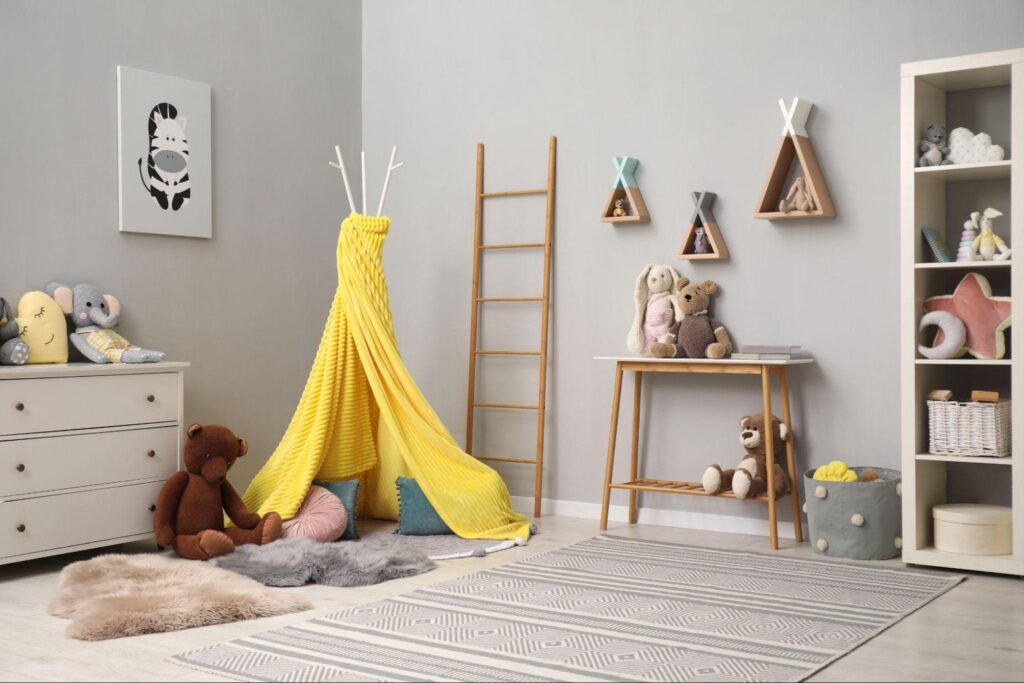
Create reading corners by positioning bookshelves to form partial enclosures, then adding floor pillows or small seating within these nooks. The shelving provides both boundary definition and functional storage while creating a sense of cozy containment that encourages focused reading.
Define art areas through surface choices rather than room alterations. A simple plastic tablecloth or washable mat under an existing table immediately signals a “creative zone” while protecting floors from inevitable artistic enthusiasm. Wall-mounted paper rolls or easels complete these areas without requiring permanent installations.
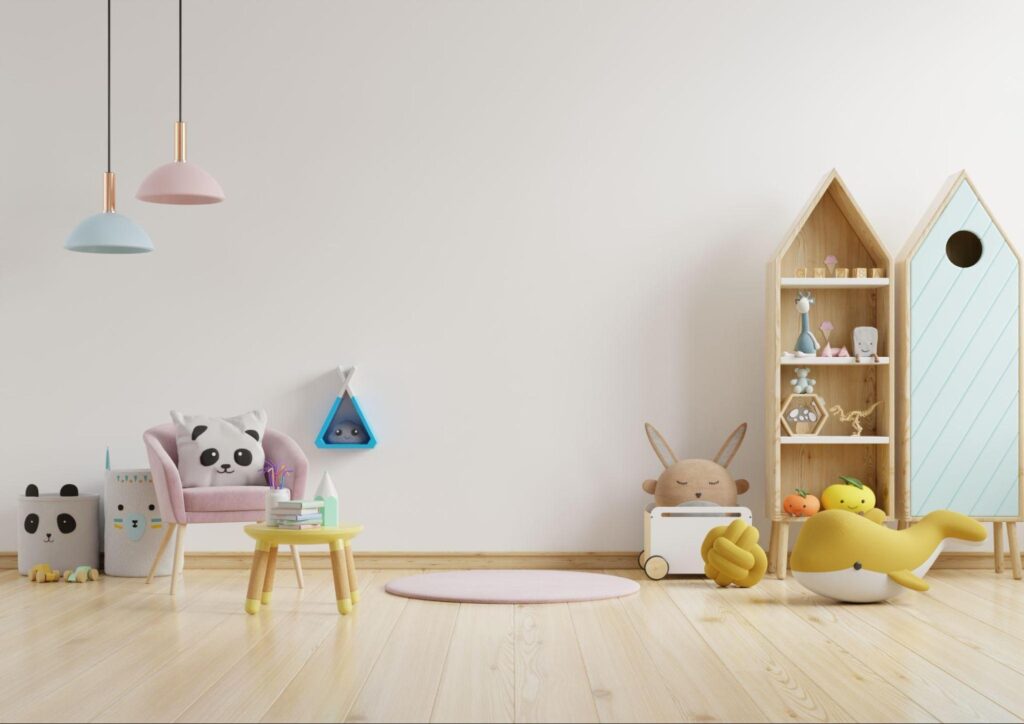
Active play zones need only open floor space and boundary definition. Area rugs create instant visual boundaries while providing cushioning for physical activities. These defined but flexible spaces accommodate everything from block building to dance parties without dedicated equipment or built features.
Child development experts note that these distinct zones serve crucial developmental functions beyond simple organization. Clearly defined areas help children develop executive functioning skills as they learn to match activities with appropriate spaces. The physical transitions between zones support cognitive transitions between different types of play and learning. Even young children quickly internalize these environmental cues, often demonstrating improved focus and engagement when activities have designated spaces with appropriate sensory conditions.
Storage Solutions That Grow With Children
Rather than investing in age-specific storage, focus on flexible systems that accommodate changing needs as children develop.
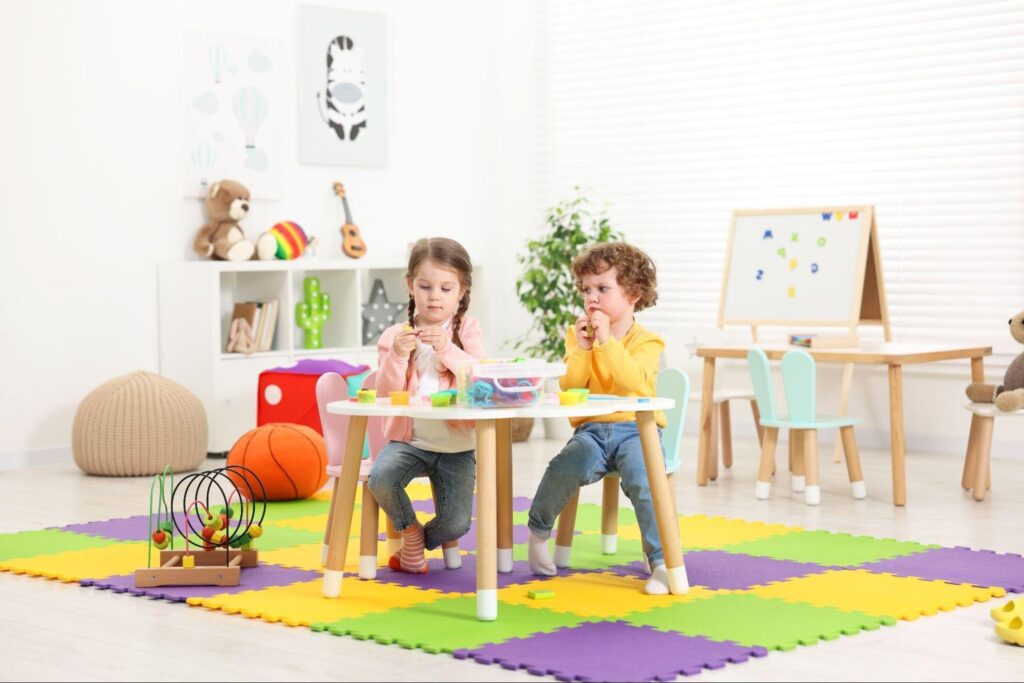
Open shelving provides the most adaptable long-term storage. Unlike toy boxes that create inaccessible jumbles, visible shelf storage helps children identify and independently access appropriate items. These same shelves later accommodate books, hobby supplies, or electronic equipment as children’s interests evolve.
Modular cube systems offer particular versatility. Individual cubes can hold baskets for small toys during early years, then transition to display space for collections or accomplishments as children grow. The reconfigurable nature of these systems allows adaptation to changing needs without replacement.
Label systems that evolve with literacy development maintain organization across developmental stages. Picture labels help the youngest children return items to appropriate locations, while text labels alongside pictures support emerging readers. These visual cues promote independence and organizational habits that serve children throughout life.
Cost-Effective Design That Delights
Creating visual interest in playrooms requires creativity, not cash. Some of the most engaging playroom designs incorporate simple, inexpensive elements that bring spaces to life.
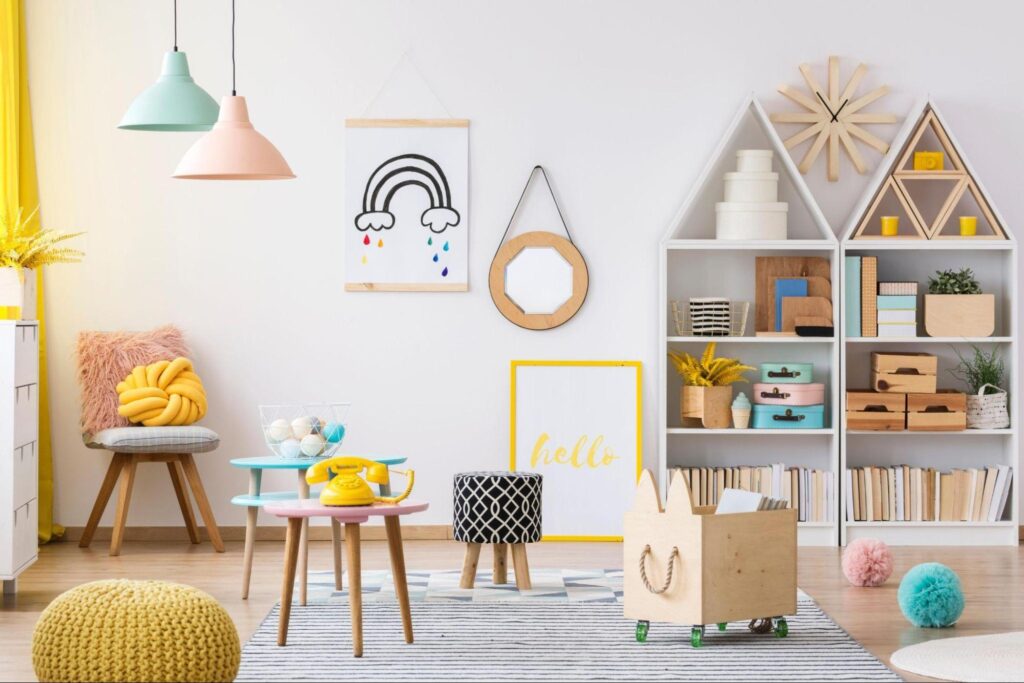
Wall treatments offer high visual impact for minimal investment. The paint represents the most affordable transformation, with options ranging from single accent walls to simple geometric patterns created with painter’s tape. For non-permanent impact, removable wall decals provide instant personality without commitment.
Displayed artwork transforms regularly without additional expense. Simple systems for rotating children’s creations—clipboards mounted to walls, suspended wires with clips, or magnetic surfaces—create ever-changing galleries that personalize spaces while celebrating creativity.
Lighting modifications dramatically alter environments without significant cost. String lights draped along bookshelves, color-changing LED bulbs in standard fixtures, or inexpensive clip lamps highlighting activity areas create an atmosphere while improving functionality.
Flexibility That Welcomes Change
The most successful playrooms embrace adaptability rather than perfection, creating spaces that evolve alongside developing children.
Furniture on wheels accommodates changing needs without major reorganization. Rollable storage carts, tables with casters, and mobile toy containers allow quick reconfiguration for different activities or developmental stages. This mobility turns spatial limitations into opportunities for variety rather than restrictions.
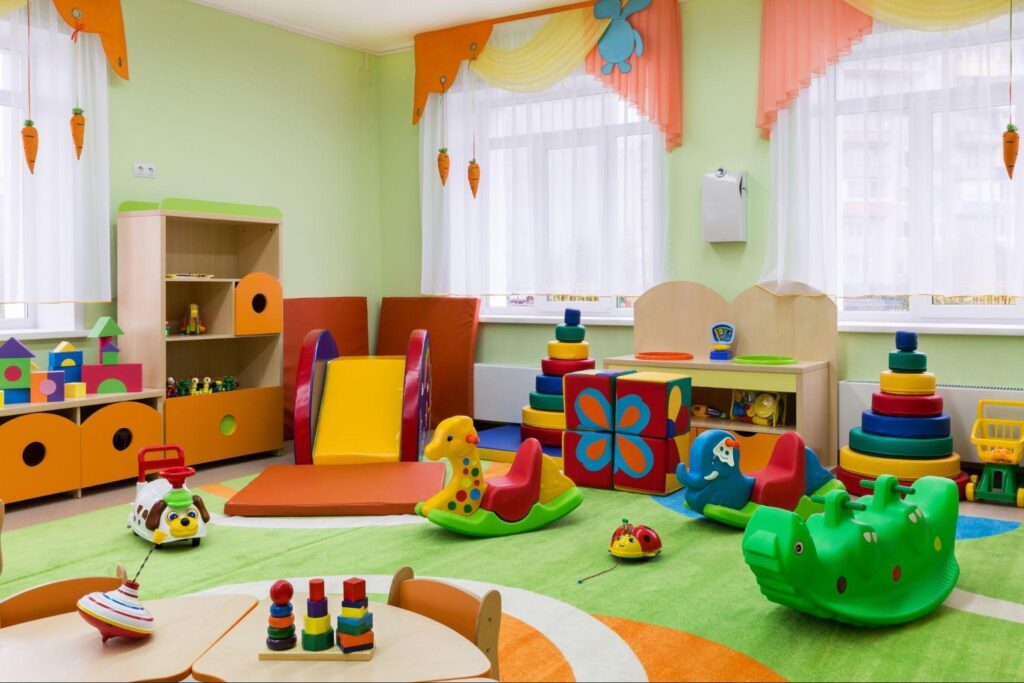
Multi-purpose pieces extend usefulness across years. Ottoman storage that serves as both seating and toy containment, tables that adjust in height as children grow, or bookshelves with adjustable shelving accommodate changing functions without replacement. These versatile elements provide value far beyond single-purpose alternatives.
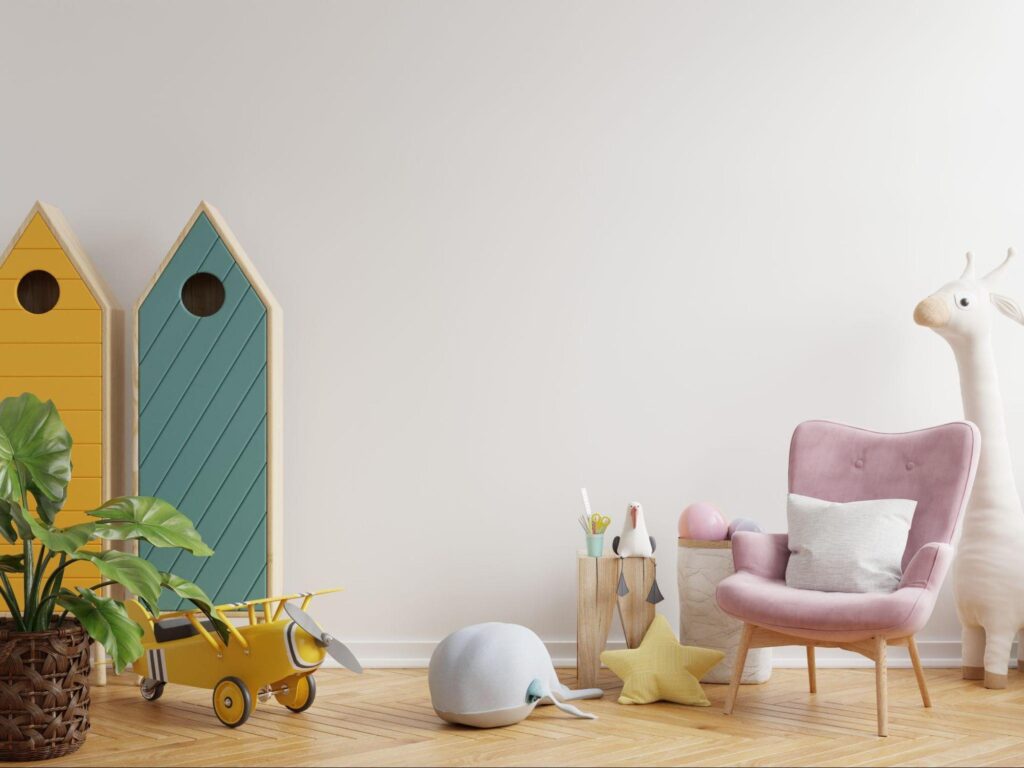
Neutral backgrounds with interchangeable accents allow refreshing without renovation. Base colors and major furnishings in timeless selections let themed elements—throw pillows, artwork, or accessories—rotate with changing interests. This approach satisfies desires for character-themed environments without committing to designs children quickly outgrow.
Creating an effective playroom doesn’t require specialized expertise or a substantial budget—just thoughtful consideration of how your family lives and plays. By focusing on flexibility over perfection and function over form, you can create spaces that truly support childhood development while maintaining your sanity and budget. The most beloved playrooms grow and change alongside the children who use them, welcoming imagination rather than imposing rigid design expectations.

Hi, I’m Christian, a 43-year-old father of two and a lifelong DIY enthusiast. My workshop is where I spend countless hours experimenting, upgrading, and fine-tuning. Sharing my experiences and practical advice is my way of helping others create homes they love.




